KALMAN FILTER or SUBOPTIMAL – DOES IT MATTER?
For steady-state a suboptimal estimator can be designed with near-optimal performance. A Kalman filter, though, optimizes accuracy during transients too – provided that the model is known and linear. Immediately we’ll invoke the “almost/most/if” qualification: an extended Kalman filter (EKF) is almost optimum, throughout most of its operation, if the model is almost linear and modeling errors are held in check via process noise. Rather than presenting justification here I’ll cite a set of “do’s-and-dont’s” – validated by long experience – from Section 2.9 of GNSS Aided Navigation and Tracking , with GPS/INS flight test data included. Eqs. (9.9)-(9.19) of that same reference provides simple design equations for alpha-beta and alpha-beta-gamma trackers that have consistently produced success in operation.
First we’ll note that suboptimal is not equated to “constant gain” – if for no other reason, the time between measurements will vary in many systems. That’s quite easily accommodated by the alpha-beta[-gamma] designs just mentioned. There are additional reasons, though, that can be illustrated by addressing a taxing situation for initiating a radar track file in close range air-to-air encounters between two fighter jets. The target’s (i.e., tracked object’s) cross-range velocity at lock-on time is unknown. It could be 800 ft/sec, for example, in which case the tracker’s initial velocity error has at least that 800-ft/sec component. With any additional unknown component of along-range velocity the target may have at that instant (doppler, if observed, might not yet be trusted to represent range rate dynamics), the tracker’s initial velocity error will then exceed 800 ft/sec. The transient at acquisition could easily be further complicated by acceleration. Anyone familiar with servo pull-in dynamics will immediately see how the transient can reach significantly beyond the initial error – very fast – in multiple directions (e.g., East/West and North/South). Since we’re not at all comfortable with velocity errors on the order of 1000 ft/sec, the task is to wash that out ASAP.
A Kalman filter having accurate knowledge of the initial [P] matrix would breeze through this challenge. An excellent example of its role is provided by this transient behavior. Knowledge of that matrix is tantamount to knowing whether – at initiation time – the tracker’s North velocity error is positively or negatively correlated (i.e., likely to have the same or opposite sign) as its North position error, likewise for East velocity error with same-vs-opposite sign of North acceleration error, and likewise … all combinations – not only the signs but also the RMS amounts. Of course that’s completely unrealistic. So now what?
Suboptimal gain sets phased in at the right times can handle this. For a simple illustration, let a 3-dimensional tracker, divided into three separable 3-state (position/speed/acceleration) single-direction channels, have a 20-Hz update rate. If the first few updates have gains of 0.5 or more for position only , even a huge position error can be quickly brought down near sensor-error levels before accompanying errors in dynamics have much time to propagate. Then after that many (“K1”) position corrections, a position-&-speed update phase can be initiated, using the alpha-beta tracker gains related as shown in Eq. (9.12) of the reference cited above. Duration of that phase is devised to last only as long as necessary to reduce speed error to design levels (which will be proportional to measurement error divided by that duration). After the total number of corrections has reached that intended design value (“K2”), the alpha-beta-gamma phase can start with gains related according to Eqs. (9.18-19) of that same reference. That phase continues until the total corrections count reaches “K3” at which time acceleration error is reduced to an amount inversely proportional to the square of (K3-K2). Gains thereafter may conform to Kalman filter weighting.
This example is not intended to advocate substituting suboptimal for optimal designs just anywhere. Separation of 3-dimensional trackers into 3-state single-direction channels is often permissible (and sometimes even highly advisable), but – as shown in the cited reference – sometimes inappropriate. Where it is permitted, use it; solving the unknown-P-zero problem is especially important in applications of this type. A word to the wise: Do not ( repeat : do not ) make the update counts K1,K2,etc. programmable. If you do, someone unfamiliar with the reasoning above will experiment, allowing resets to values producing very prolonged back-and-forth transfer of errors among position and dynamics (one gets worse as another improves; then vice-versa). When that spectacle is seen by nontechnical administrators, your image in their minds will forever be indelibly painted with that long drawn-out transient veering back and forth between plus and minus extreme levels.
Another slice-of-advice: Even if inputs are extremely erratic, your tracker must maintain high responsiveness (for sensor sightline stabilization at short range and for range[/doppler] gate placement at any range) – but – the outside world doesn’t have to witness the results of that “hitchy-hatchy” from wildly erratic inputs. So: don’t change the tracker but what goes outside can be low-pass filtered to ease interpretation of the display. Since that “hides the system’s warts” without attacking the problem at its roots, the resulting lag (possibly with accompanying distortion) can draw criticism.










